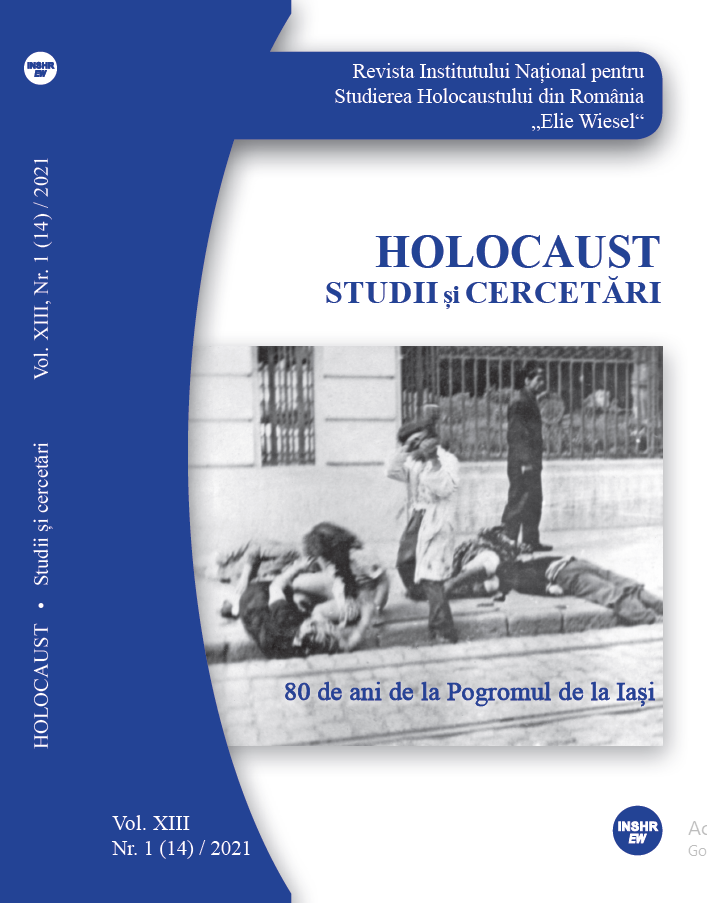Both Form and Substance: Romanians and Political Antisemitism in a European Context
Both Form and Substance: Romanians and Political Antisemitism in a European Context
Author(s): Roland ClarkSubject(s): Social history, Interwar Period (1920 - 1939), Fascism, Nazism and WW II, History of the Holocaust, History of Antisemitism
Published by: Institutul National pentru Studierea Holocaustului din Romania ELIE WIESEL
Keywords: Antisemitism;Romania (Roumania, Rumania);transnacionalism;A. C. Cuza;Corneliu Zelea Codreanu;
Summary/Abstract: Nineteenth- and twentieth-century Romanian public discourse was obsessed with the question of Romania’s place in Europe. Whereas some elements of Romanian culture might have reflected European forms without their substance (forme fără fond), between roughly 1880 and 1944, political antisemitism had both form and substance. Romanian antisemites were at the forefront of developments within European antisemitism and saw it as a way of demonstrating their Europeanness. Anti-Jewish rhetoric, laws, and violence during this period should thus be discussed as part of a broad transnational story of political antisemitism and not in terms of Romanian exceptionalism. This article situates the origins of antisemitic political organising in Romania alongside similar developments in Austria, Germany, and France, showing that the Romanian antisemites were well connected with prominent antisemites abroad. Just as antisemitism entered urban politics during this period, it also shaped rural violence, which was provoked by the sort of propaganda and rumour-mongering seen in the Russian pogroms of 1881 and the Kishinev pogrom of 1903. In 1922, Romanian students protested to limit the number of Jews enrolled at universities, as did nationalist students in Austria, Czechoslovakia, Germany, Hungary, Latvia, Poland, and elsewhere. Romanians corresponded with antisemitic students abroad and employed the same language, repertoires, and frames that were popular elsewhere in Europe. Antisemitism shaped the way that Romanian fascists, from the Romanian National Fascists to A.C. Cuza, Corneliu Zelea Codreanu, Ion Moţa, and Nichifor Crainic, related to fascist movements abroad during the interwar period. Publicists such as Georg de Pottere and Ulrich Fleischhauser drew Romanians into pan-European antisemitic networks, and antisemitism sabotaged Eugenio Coselschi’s attempts to persuade the Legion of the Archangel Michael to ally itself with Fascist Italy. Legionaries did find common ground with young antisemites in Poland, and their struggle against “Masonic Marxism” helped unite them with other fascists fighting in the Spanish Civil War. Ultimately, the Romanians’ aspirations to become equals with European antisemites were dashed during the Second World War, as Nazi advisors dictated the shape, if not the scale, of the Holocaust in Romania.
Journal: Holocaust. Studii şi cercetări
- Issue Year: XIII/2021
- Issue No: 14
- Page Range: 41-68
- Page Count: 28
- Language: English
- Content File-PDF

